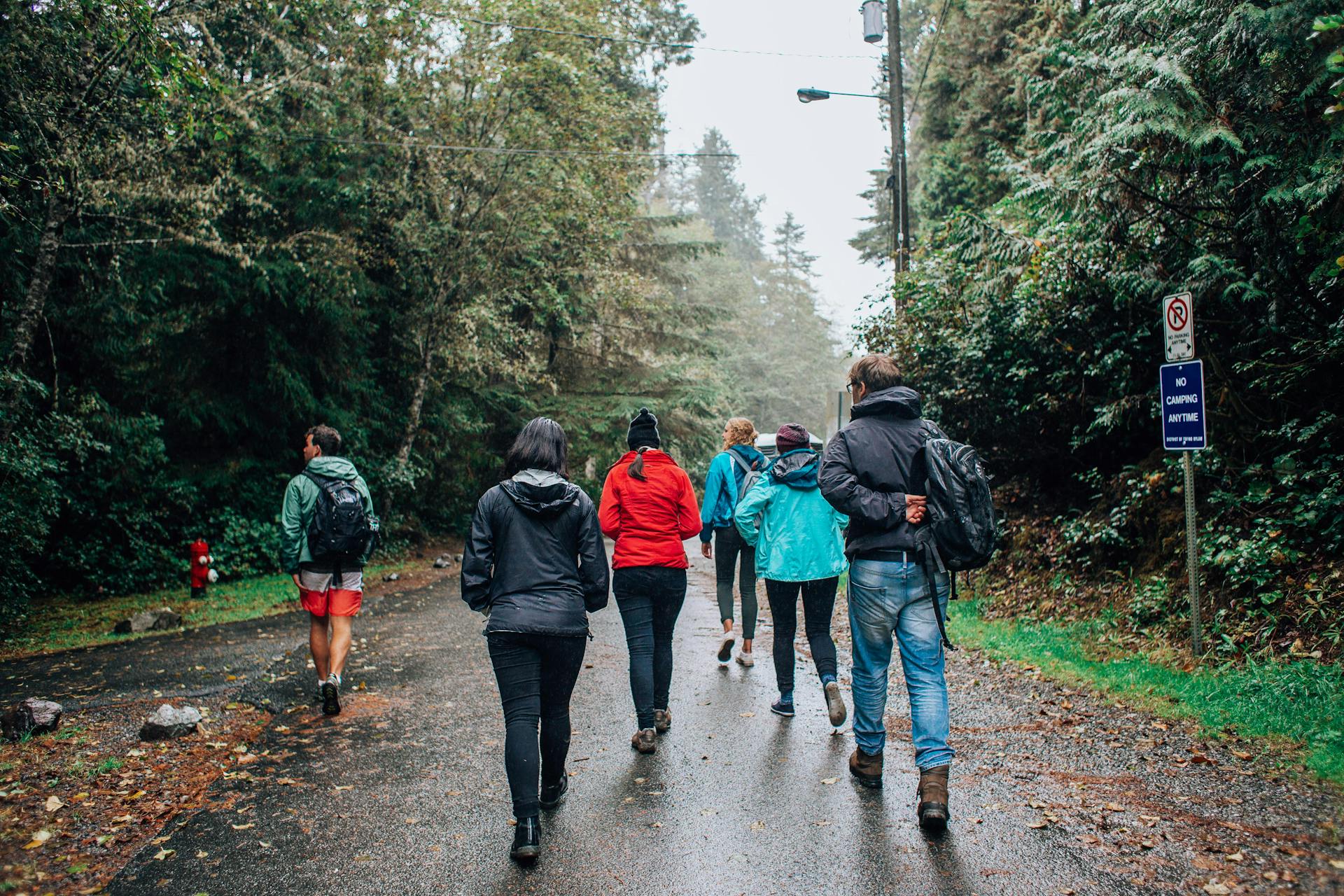Camping in the great outdoors is an experience many people cherish, offering the chance to disconnect, explore, and connect with nature. However, sometimes the weather doesn’t cooperate, and rain can turn an exciting adventure into a soggy, uncomfortable ordeal. But don’t let these common camping challenges ruin your trip. With the right preparation and gear, you can stay dry, comfortable, and enjoy your time outdoors, no matter the weather. Here’s how to stay dry during rainy camping trips.
1. Choose the Right Tent
Your tent is your first line of defense against rain, so choosing one that can keep you dry is essential. When shopping for a tent, look for these key features:
- Waterproof Materials: Look for tents made of waterproof or water-resistant materials such as nylon or polyester. These fabrics are lightweight and durable while offering resistance to water. Make sure the tent has a water-resistant coating or a higher Denier rating, which indicates stronger fabric.
- Rainfly: A rainfly is an essential tent feature for keeping rain out. This is an additional waterproof cover that fits over the tent, providing extra protection from rain. Some tents come with a built-in rainfly, but it’s important to ensure it covers the entire tent and extends down to the ground.
- Sealed Seams: Check the seams of your tent. Many tents have taped seams to prevent water from leaking through the stitching. If your tent doesn’t have sealed seams, consider applying a seam sealer to reinforce the protection.
- Vestibule or Porch: Some tents come with a vestibule or extra sheltered area at the entrance, which provides a dry spot to store gear or take off wet clothes before entering the main tent.
2. Set Up Your Tent in the Right Location
Even the best tent won’t keep you dry if it’s pitched in the wrong spot. Choosing the right campsite is crucial in rainy conditions.
- Avoid Low-Lying Areas: Water tends to collect in low areas, so avoid pitching your tent in depressions or valleys. Setting up in a low spot can lead to water pooling around your tent, making for a miserable experience.
- Choose a Spot with Good Drainage: Look for high ground with good drainage. A slightly sloped area will help prevent rainwater from pooling around your tent. If possible, pitch your tent on a natural platform or a small, elevated area.
- Avoid Pitching Under Trees: While it might seem like a good idea to camp under a tree for shelter, it’s best to avoid this in rainy weather. Rain can get funneled through the tree branches, leading to wet conditions underneath. Plus, there’s a risk of branches or trees falling in a storm.
3. Invest in Waterproof Gear
Staying dry isn’t just about your tent. You also need to invest in the right waterproof gear to keep your body and belongings dry. Here’s what to consider:
- Waterproof Jackets and Pants: A high-quality waterproof jacket and pants are crucial for staying dry in the rain. Look for breathable materials, such as Gore-Tex, that keep water out while allowing sweat to escape. Make sure your jacket has a hood, adjustable cuffs, and a high collar to keep water from seeping in.
- Waterproof Footwear: Wet feet can quickly make a camping trip uncomfortable. Waterproof boots with a good grip are essential for rainy camping. Consider boots made from waterproof materials such as Gore-Tex or rubber to keep your feet dry even when wading through puddles.
- Waterproof Gloves and Hats: Don’t forget to protect your hands and head. Waterproof gloves will keep your hands warm and dry in wet conditions. A waterproof hat will also help keep your head dry, especially if the rain is heavy.
4. Use a Tarp for Extra Protection
A tarp can be a lifesaver during rainy camping trips. When set up properly, it can provide extra shelter from the rain and keep you dry while cooking or relaxing outside your tent.
- Set Up a Tarp Over the Campsite: Use a tarp to create an additional layer of protection over your campsite. It can keep your tent’s entrance dry and give you a dry area for cooking or hanging out when the rain starts. To prevent water from pooling, set the tarp up with a slight slope.
- Use the Tarp to Cover Gear: Keep your gear dry by draping a tarp over it. This is especially useful if you have items like backpacks, sleeping bags, or cooking equipment that could get soaked in the rain.
5. Keep Your Tent Dry Inside
A wet tent interior can make your camping trip unpleasant, so keeping the inside of your tent dry is just as important as keeping the outside dry.
- Use a Groundsheet or Footprint: A groundsheet or tent footprint is an additional layer of protection for your tent’s floor. It prevents moisture from seeping through the bottom of your tent and protects against wear and tear. Make sure the footprint is slightly smaller than the tent’s base so that rainwater doesn’t pool between the groundsheet and the tent.
- Keep Wet Items Outside: Store wet clothes, shoes, and gear outside your tent. If you need to keep things inside, place them in a plastic bag or stuff sack to prevent moisture from spreading to your sleeping area.
- Ventilation: Condensation can build up inside your tent, especially during rainy conditions. To prevent moisture buildup, ensure your tent has proper ventilation. Use vents or windows to let air circulate, but make sure they’re not positioned in a way that allows rain to enter.
6. Drying Your Gear
Even with the best precautions, some of your gear will get wet. Here’s how to deal with wet gear:
- Dry Clothes Overnight: After a day of wet weather, your clothes will likely need drying. If there’s no break in the rain, hang them inside the tent near the entrance or in a vestibule, where they can dry without getting soaked again.
- Use a Clothesline or Tarp: If the rain lets up, take advantage of the break by hanging clothes and gear on a clothesline or tarp. You can hang your wet clothes between trees or use a clothesline to dry them out.
- Dry Sleeping Bags: If your sleeping bag gets wet, it’s essential to dry it out as soon as possible. Store it in a dry area, or if there’s a break in the rain, hang it to air out. Consider using a sleeping bag liner to help keep the interior of your sleeping bag dry.
7. Prepare for Wet Weather in Advance
Lastly, preparation is key when camping in rainy conditions. Make sure to:
- Check the Weather Forecast: Before heading out, check the weather forecast to ensure you’re prepared for the conditions. Being aware of rain patterns can help you plan your trip and make adjustments as necessary.
- Pack Extra Clothes: Bring multiple sets of clothes, including extra waterproof layers, so you can always stay dry. Don’t forget extra socks and underwear, as wet feet can lead to blisters and discomfort.
- Prepare for Emergencies: In case the weather turns severe, make sure you have a plan in place. Always pack a waterproof emergency blanket, a first aid kit, and a reliable flashlight or headlamp.
Conclusion
While rainy weather can pose significant challenges for campers, it doesn’t have to ruin your trip. By choosing the right gear, preparing your campsite properly, and knowing how to manage wet conditions, you can stay dry and comfortable during even the rainiest camping trips. Follow these tips, and you’ll be ready to embrace the elements and enjoy your outdoor adventures—rain or shine.

